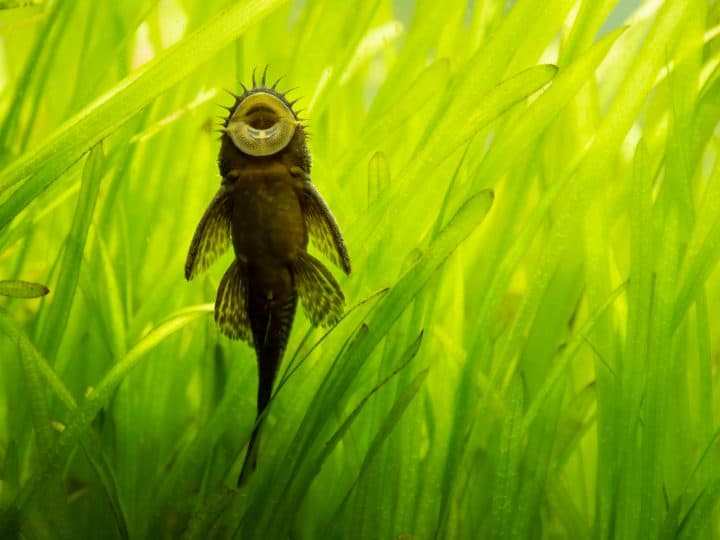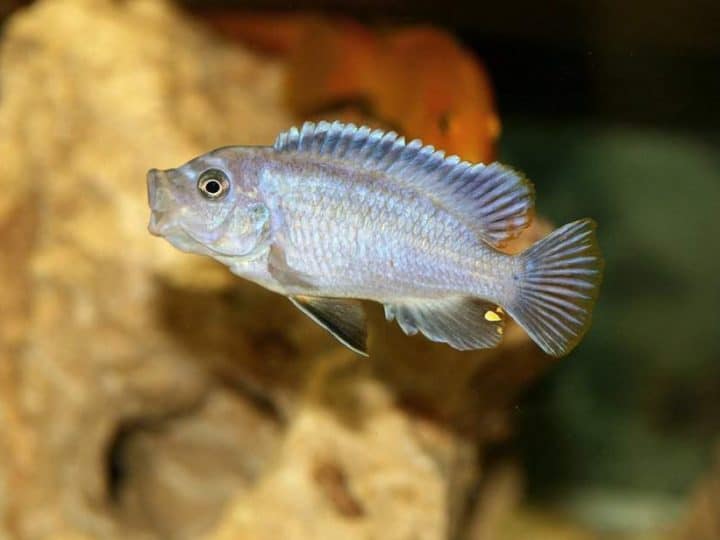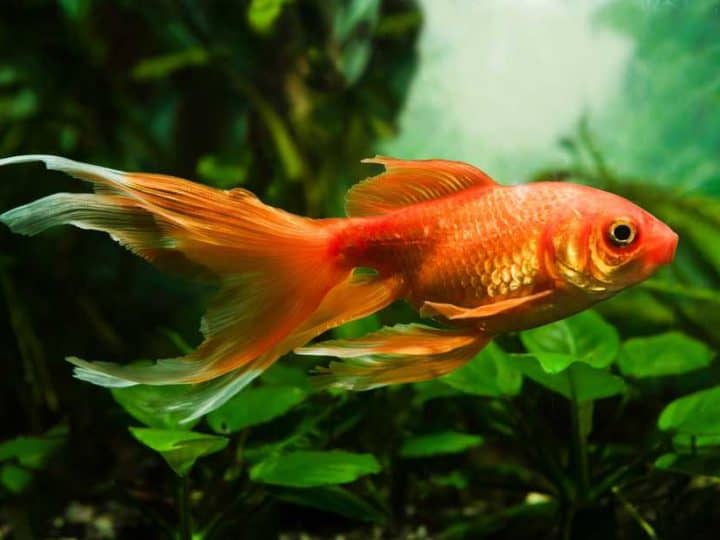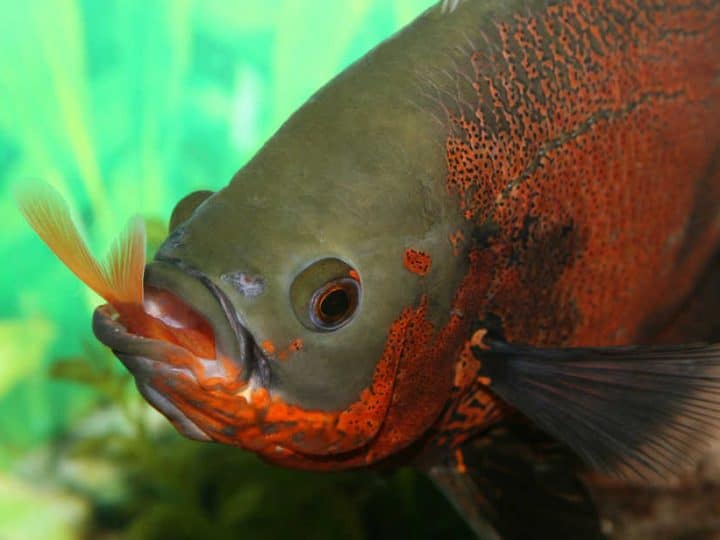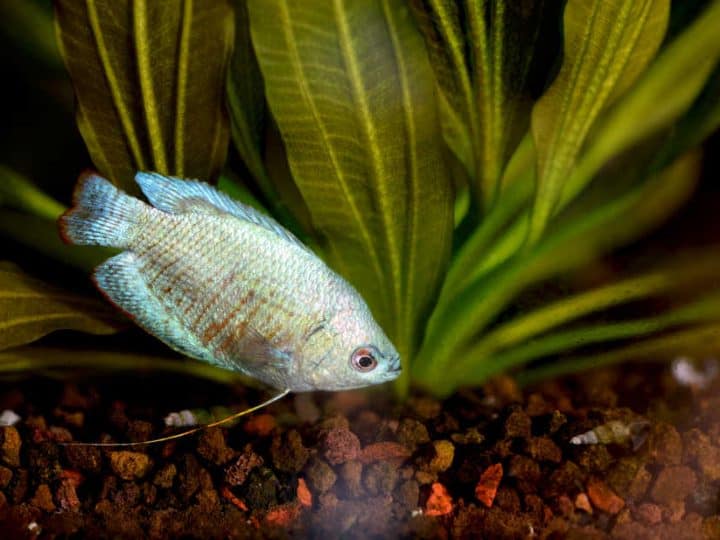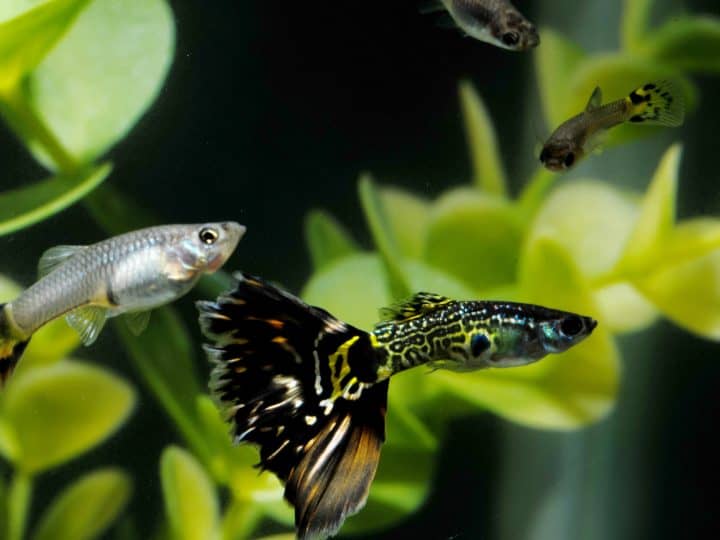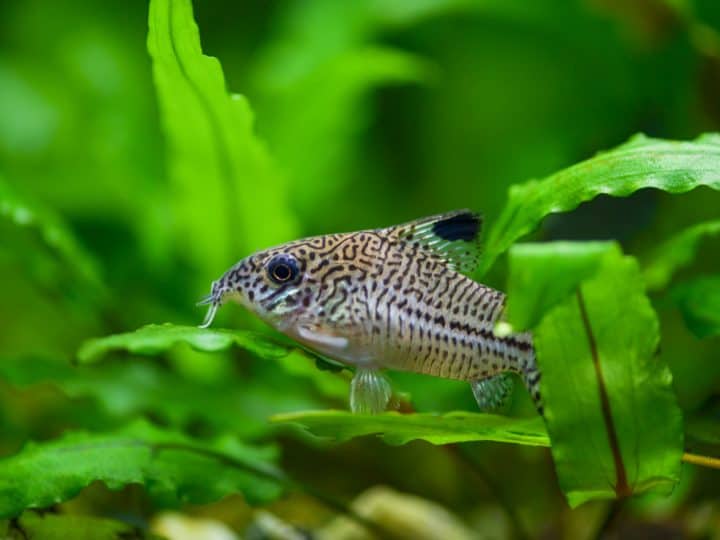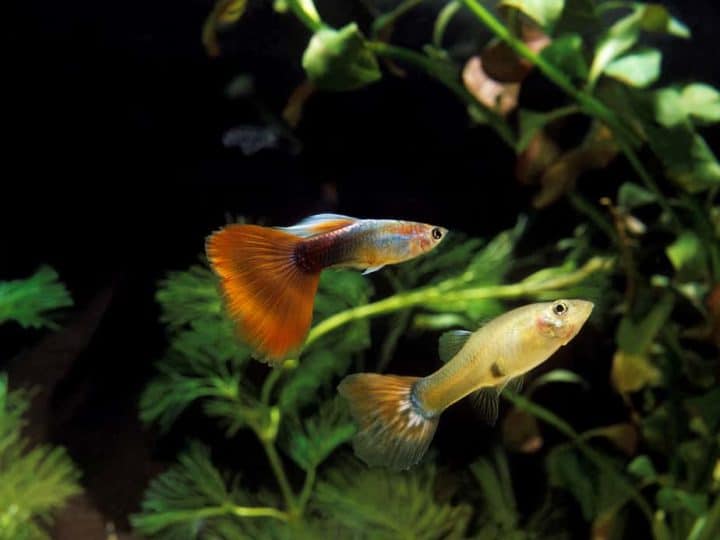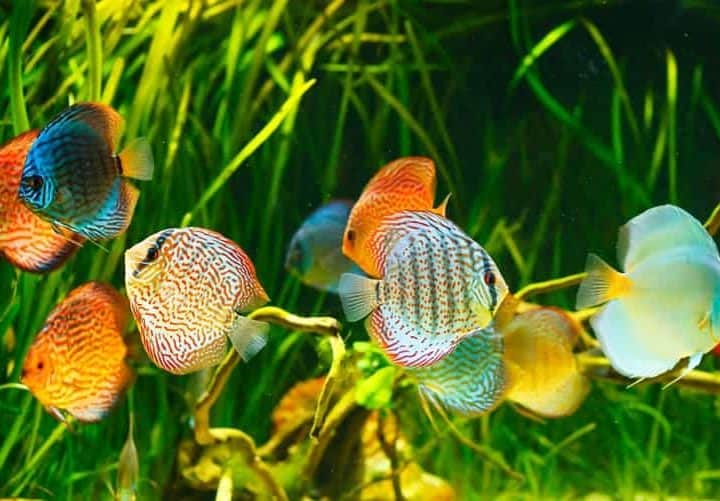Some people believe catfish can eat almost anything because they naturally scavenge for what to eat and because it’s an easier way of cleaning the fish tank. So I’m sure you might be wondering if your catfish is desperate enough to eat poop, amongst other things and if you’ve got a natural tank cleaner.
Quick Answer
Catfish don’t eat poop because it’s not part of their diet and neither does it give them nutrients. However, they can sometimes eat poop in your aquarium if they mistake it for food.
In this article, you’ll find out the different types of catfish, which one of them is likely to eat fish poop and the best way to keep your fish tank clean and free of dirt or poop. Let’s dive in to find out more.
Will Catfish Eat Poop in Your Tank?
Generally, catfish are not known to feed on poop, and neither is it part of their recommended diet. Nevertheless, they can think of poop as food, eat it, and once they realize it’s not food, they spit it out.
Thinking that catfish feed on poop would mean they can be relied on to handle their feeding when they need to eat, even to poop at all. Just like humans, they do require dedicated food to aid their growth. They also sometimes feed on leftovers from other fish in the tank.
What Do Catfish Eat?
Since catfish don’t feed on their poop or other poop, it is necessary to know what they eat to nurture them to grow successfully. A good Catfish diet consists of sinking pellets, brine shrimp, and worms.
They are to be fed by following the recommendation on the packaging and not your own judgement.
Is There a Fish Out There That Eats Poop?
I would never imagine a human eating poop to survive, so I find it a little bit weird to think there’s a fish that feeds on poop and depends on it to survive.
Poop is synonymous with dirt. It’s the excrement that comes from the bowel once the food eaten has been digested properly. So it will be unusual for it to contain any nutrient that’d be beneficial to the body or, in this case, the growth of the fish.
No fish eats poop. However, catfish like corydoras, bristle nose plecos, and sometimes snails or shrimps are referred to as “clean up crew“, scavengers, so to speak. You bring them into your tank to clean it of dirt or poop.
This cleaning method is said to be ineffective and people’s lazy way of maintaining a fish tank, a method that certainly does not benefit overall water quality. Instead of cleaning as a tank owner, they bring either of these fish into the tank to do the job.
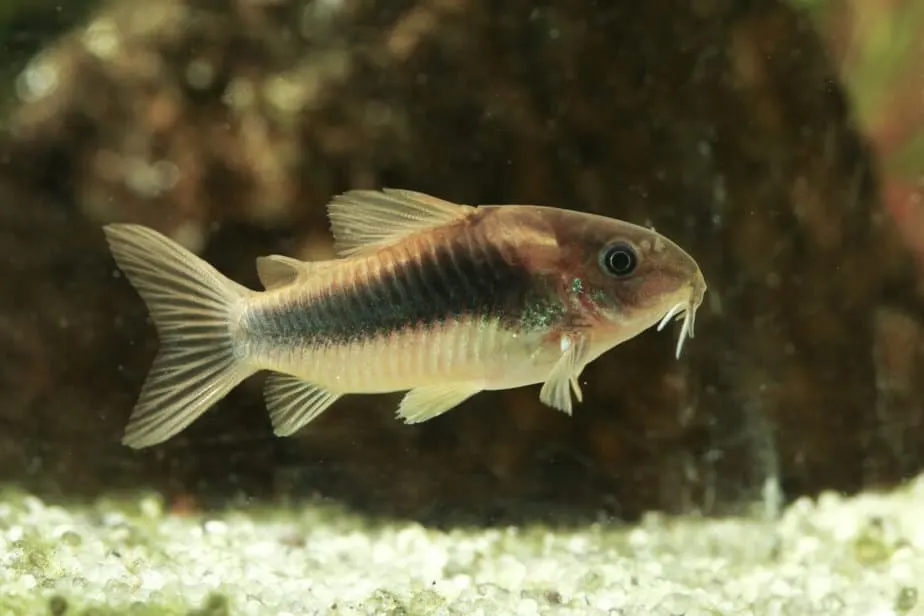
Sadly, the clean-up crew doesn’t clean up as expected, especially when it comes to the substrate. They mostly come into the tank and scout for dead fish, uneaten organic leftovers to prevent them from rotting. If you want to rid your tank of feces, you can’t depend on a fish to do a human’s job. A fish’s behavior in its natural habitat does not include eating poop.
So if you’ve been considering introducing a cleanup crew to your tank for that purpose, you might want to rethink. A cleanup crew is advisable only if you’re going to prevent leftovers from lurking underneath your tank and, most importantly, if it’s safe for other tank members.
Why Is Your Fish Eating Poop?
If you see your fish is eating poop, don’t be alarmed. The fish is probably confused and sometimes mistakes the poop for food. It could also be because they are not fed as often as necessary, and in a bid to get something to eat, they search around the aquarium and feast on anything they can find.
What to Do if Your Fish Is Eating Poop
If you find out your fish feeds on poop, which is unlikely, by the way, here are few things you can do to change that.
Increase Feeding
One of the reasons your fish is feeding on poop might be inadequate food for consumption. A fish tends to scavenge around for food when there’s nothing available to eat.
Don’t starve your fish. Feed them as often as required. This is not in any way an indication to overfeed as that could have its repercussions. Excess food winds up on the aquarium floor and can lead to ammonia spikes and encourage the growth of harmful bacteria.
If you’re confused about how often you’re to feed your fish, follow the recommendation that comes with the packaging.
Clean Up
It is expected that a fish will poop in the same water it feeds. It now depends on you as the owner to clean it frequently.
Constant cleaning would get rid of poop or any dirt, which would lower or ultimately decrease the chances of your fish feeding on poop inside the pond.
If there is so much organic matter present that overall cleanliness has become a problem, it’s up to youto take the steps necessary to keep the aquarium water clean, such as by using a gravel vacuum.
Is Poop Healthy for Your Fish?
In this article, we’ve talked about how it’s rare for a fish to eat poop, but what if your fish eats it? Is it healthy, and are there any health complications that can arise because of it?
There’s no proof to show there are nutrients in the poop of a fish, so if a fish mistakenly feeds on it, there are no health benefits attached to it. However, there are no complications that would happen because of it too.
Yet, there might be a problem if a fish feeds on the poop of a fish with internal parasites. Simply put, there is no fish species out there that naturally eats poop on a regular basis.
What to Consider When Getting a Cleanup Crew
As stated earlier, the cleanup crew is essential not to get your tank free of poop but to eat leftovers and prevent too much rotten food or nutrients lurking underneath your fish tank. This is because leaving them might lead to an ammonia spike, which will be detrimental to the health of the fish in your tank.
You can use different cleanup crews, such as snails, shrimps, urchins, corydoras, or bristle nose catfish. Here are a few things to consider before choosing a cleanup crew for your tank.
Safety
The safety of the tank members is undoubtedly the essential thing to consider before choosing a cleanup crew for your tank. It would be best to be sure the tank members will be safe with the team being introduced. The purpose of a crew is to make the water safe for the tank members, not the opposite.
Size of Tank
The number of crew members you’ll introduce to your fish tank depends heavily on how large your tank is. A smaller tank will need few members, while a bigger tank will need more crew members to cover the length and breadth of your tank.
Bioload
Clean up crew clean up leftovers and dead livestock in your tank, so the bioload or biological load is known as the total amount of dead livestock in your aquarium. A small or large bioload is relative; it would depend on whether you’re just starting or you’ve been in it for a while.
Either way, the number of cleanup crews you introduce relies on the number of bioloads you’ve in your tank.
Amount of Algae
As you add more livestock to your pond, your bioload increases, accompanied by more algae growth in your pond or fish tank. If the transition is not controlled, it can quickly get out of hand, so you need to get a cleanup crew as soon as possible. You can introduce different algae eaters to your pond as a cleanup crew, such as Bristlenose plecostomus, same algae eater, and a Chinese algae eater.
The Best Type of Catfish for Cleaning Your Aquarium
Research shows there are 40 types of catfish and over 3000 catfish species. Listed below are some of the types of catfish;
- Upside Down Catfish
- Otocinclus catfish
- Picture Catfish
- Cory Catfish
- Glass Catfish
- Bristlenose Catfish
- Bumblebee Catfish
- Wels Catfish
- Channel Catfish
- Flathead Catfish
Not all catfish can do the work of a cleanup crew in a pond, and out of all the ones listed above, only two can efficiently clean your aquarium.
Corydoras Catfish
The corydoras catfish, also known as cory cat, (Corydoras spp). is a member of the catfish family that is good for cleaning up the pond, probably because they are natural bottom dwellers, and they’re known for scavenging for food below.
There are over 160 species of Corydoras described and many more left to be identified. Among the most popular cory cats in the aquarium trade are the green cory (Corydoras aeneus) and the leopard cory (Corydoras trilineatus).
Synodontis Lucipinnis
This particular member of the catfish family tends to swim like sharks. They’re nocturnal, bottom dwellers, which makes them a good option if you want to clean up your aquarium. While Synodontis lucipinnis can be expensive in the aquarium trade, they are hardy and undemanding fish and will help keep your tank clean for many years to come.
How to Remove Fish Poop in a Tank
Leaving a pond unattended or full of poop is never a good idea. Poop is an organic waste that can decompose and quickly mix with water, so if they’re not removed manually for a while, they will perish and mix with the tank water. If this happens continuously, the water becomes unsafe for the occupants, it becomes poisonous, and can also lead to their death.
We already realized that using a cleanup crew to rid the tank of poop is not effective unless you’d like to remove dead livestock or leftover food. So how then does one keep the pond clean and poop-free?
Getting rid of poop needs to be done manually by a human, and it has to be done consistently to avoid the poop from accumulating over a long period. Different ways of cleaning out the poop include;
Scoop the Poop
You can get rid of poop in a pond by scooping away the excrement. Whenever fish poops, it floats around for a while before it finally settles down below. So when the poop still floats, you can make use of a skimmer—this doesn’t work for poop that has already sunk below the water.
Drain the Pond
This can be a little stressful as it requires you to transfer your fish out of the aquarium before draining the water entirely and cleaning off the pond.
To do this effectively, you need to scoop out water directly from the aquarium and add it wherever you transfer the fish—this is because the fish is already adapted to the water, and changing it immediately can affect the fish.
So you transfer the fish somewhere with some water in the tank, drain the water in the pond to clean thoroughly, and then transfer the fish back.
Vacuum It
Using a vacuum cleaner is one of the best ways to clean your pond. Unlike draining the tank, it’s less stressful, and it saves time. You can use it to transfer water and easily clean your tank.
The Hygger Aquarium Gravel Cleaner is one of the best vacuums you can use to clean your aquarium. It is suitable for all fish tanks, and it can be used for water changing, sand-washing, and dirt suction. You also avoid the risk of getting shocked while using it because it can be used without electricity.
How Often Should You Clean Your Pond?
There is no specific answer to this as the size of the pond affects it. For example, a big pond with many fish will have more excrement faster than a smaller one with few fish.
In essence, no size fits all, so a pond should be cleaned as often as possible. This enables the water to be okay for the fish and prevents the pond from having a different look and toxic smell because of excess dirt or excrement.
Conclusion
There’s no health benefit of a fish-eating poop. Also, there’s nothing usual about a catfish eating poop because it’s not part of their behavioral pattern. A catfish eating poop could only result from being confused in thinking of the poop as food in a fish tank, and whenever this happens, the fish spits it out immediately.

